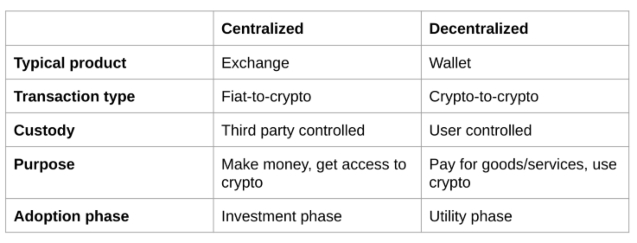
2018-7-26 21:50 |
Should Exchanges be Centralized and Decentralized?
Many consumers believe that a decentralized system should not have centralized aspects and vice versa, but in reality, the latter is needed for the former to exist and the likewise as well. Why? According to a well-thought out post shared by Traders Magazine, it consists of two phases, the “Investment Phase” and the “Utility Phase”.
In the post, it was argued that exchanges are centralized, and wallets are decentralized. One might quickly wonder how the former makes sense, but think about it, when users decide to purchase Litecoin [LTC] via Coinbase, their funds are withdrawn from traditional banks, which are then used for the purchases. Hence, the integration of traditional banks is needed to facilitate the transaction, which clearly is centralized.
When it comes to wallets, this aspect leans more towards decentralization, as it involves crypto-to-crypto transaction and users have control over their holdings. Similarly, transaction fees are, in most cases, nothing compared to the fees tied to traditional banks. Moreover, the utility phase falls here, as users are given the opportunity to make use of their holdings via their wallets.
To help users and investors of varying levels understand centralized and decentralized products, Traders Magazine shared a summarizing chart that distinguishes the difference between a crypto exchange and wallet.
As seen in their chart, when it comes to their purposes, centralized products help to make money, however, it’s the decentralized product that initiates real-life uses of crypto. The same can be said about crypto custody, as a centralized product involves middlemen interference, while the latter gives control to the rightful owner.
Noticeably, this demonstrates that a centralized system is needed to make the notion of decentralization an actuality, and this is something Coinbase and many of its likes will continue to work towards.
Similar to Notcoin - Blum - Airdrops In 2024
Decentralized Machine Learning (DML) íà Currencies.ru
|
|




















